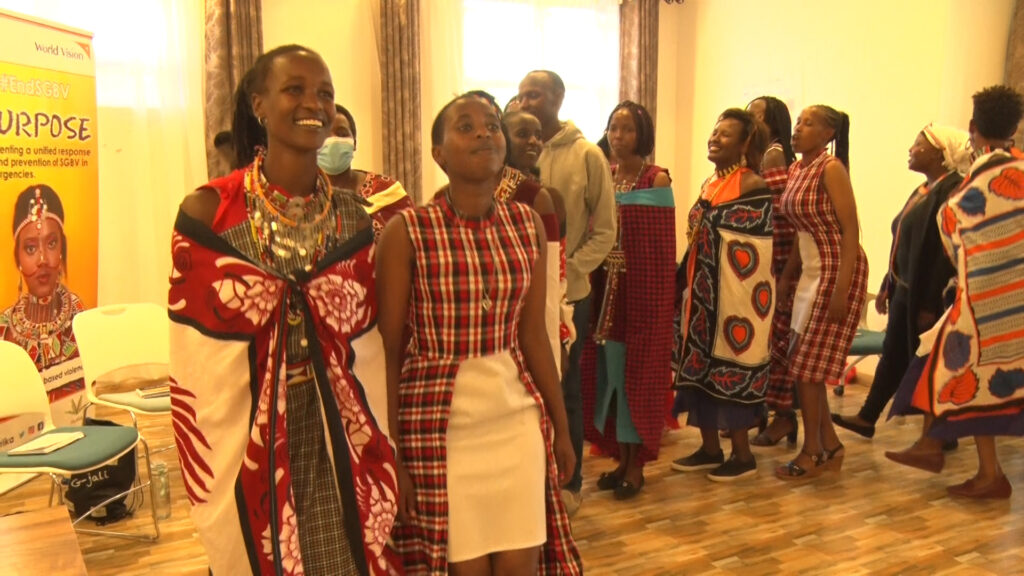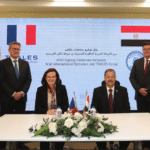NAIROBI, Kenya July 15 – Kenya has recorded remarkable strides in the fight against Female Genital Mutilation (FGM), a human rights violation, practiced in some communities in the country.
According to the 2022 Kenya Demographic Health Survey (KDHS), the prevalence of this harmful practice has decreased significantly, plummeting from 38 percent in 1998 to just 15 percent last year.
UNICEF defines FGM as all procedures involving partial or total removal of the female external genitalia or other injury to the female genital organs for non-medical reasons.
Despite being internationally recognized as a human rights violation, FGM has been performed on at least 200 million girls and women in 31 countries across three continents, with more than half of those subjected living in Egypt, Ethiopia and Indonesia.

Some of the girls who graduated after undergoing training to end stress emanating from female genital mutilation in Narok in 2022.
In Kenya, the violation that puts over 4 million girls at risk is prevalent in Maasai land, Samburu, Kisii among others.
In June 2019, former President Uhuru Kenyatta committed to ensure Kenya eradicates FGM by 2022.
“UNICEF Kenya runs the biggest prevention and response program on ending FGM and our work is complemented by the government’s efforts which are instrumental in ending the vice,” Jackson Onyando, UNICEF Child Protection Specialist told Capital News this week.
According to a survey conducted by the Kenya National Bureau of Statistics (KNBS), 3 out of 20 women aged 15–49 in Kenya have undergone the cut.
The survey also revealed that the majority of women who have experienced this practice, accounting for 9 out of 20, fall within the age group of 10 to 14.
Additionally, among women who have undergone the act, 3 out of 10 of them are between the ages of 5 to 9.
Onyando said UNICEF works closely with Kenya’s anti-FGM board in raising awareness on the dangers associated with the act.
“The partnership has enabled us to work with grassroots communities in regions that have a high burden of FGM. We thrive in building movements because there are synergies in numbers,” he said.
Onyando emphasized the significant role played by the existing laws, namely The Prohibition of FGM Act No 32 of 2011 and the Children’s Act No 29 of 2022, in the fight against FGM.
These laws, which are instrumental in contributing to the eradication of FGM, not only criminalizes all forms of FGM but also impose severe penalties on those who perpetrate it.
“The fines stipulated in law and the prison sentences continue to hinder a majority from engaging in the act. We strengthen the policy and legal framework by working with the government to ensure that there are laws in the country that help to prohibit the practice,” he said.
Health experts say a significant majority of women who have undergone the act—specifically, 7 out of 10—report experiencing severe side effects, characterized by intense pain.
5 out of 10 women equally also encounter heavy bleeding as a result of the procedure.

– UNICEF input on FGM –
A key contributor to the efforts against this harmful practice since 2008, UNICEF credits the progress made in combating it to the effective collaboration between the agency and the government in implementing comprehensive interventions.
As per the provisions of the Children Act 2022, individuals found to be facilitating the act can face strict consequences, including a fine of Sh500,000, imprisonment for a period of three years, or both.
– Challenges –
One of the obstacles that UNICEF Kenya is currently grappling with is the alarming trend of subjecting young girls as young as five years old to the cut.
Another significant challenge, he said, is the occurrence of cross-border FGM, where communities residing along the borders travel to neighboring countries to carry out the practice. Notorious borders for such activities include the Tanzania border, Uganda border, and Somalia border.
Furthermore, the involvement of medical professionals in performing the act presents yet another obstacle. Onyando lamented that some practitioners falsely believe that the procedure is safer when conducted by a professional, adding to the complexities.
Nevertheless, Onyando said UNICEF Kenya has intensified its efforts to raise awareness and combat FGM. They are working closely with the Ministry of Health (MoH) to sensitize nurses, clinical officers, and doctors about the dangers associated with FGM.
UNICEF has set a target to end FGM by 2030, aligning with the global goal established by world leaders, and Kenya is actively participating in this initiative through the Sustainable Development Goals (SDGs).





